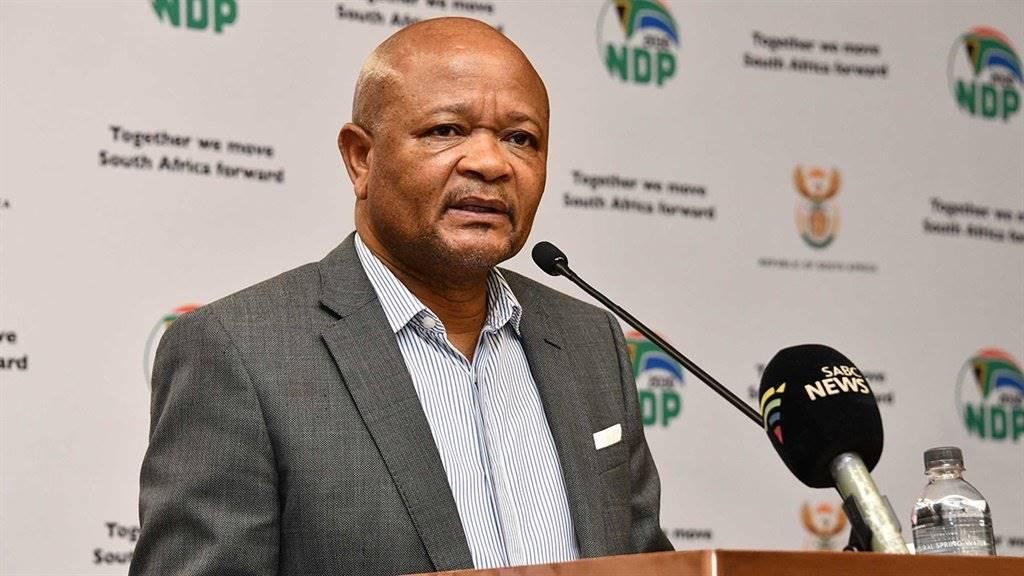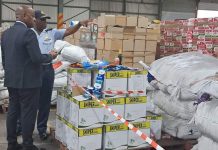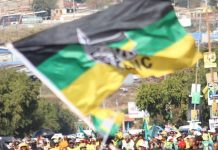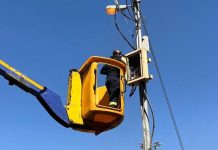Africa-Press – South-Africa. Rand Water is planning to build 12 reservoirs at a cost of R28 billion in the next five years to make sure Gauteng has enough water for its residents in 2028.
This was announced on Tuesday by Water and Sanitation Minister Senzo Mchunu at a media briefing on the state of water services in Gauteng and interventions to solve the provision of services to communities.
The minister was joined by executive mayors and a proxy from three metropolitan municipalities and other municipalities in Gauteng, with whom he had a meeting on Monday.
Rand Water purifies and provides bulk water from the Integrated Vaal River System (IVRS); the water is then purchased by municipalities and water boards and reticulated to business and residents.
The meeting comes in the wake of outages in Gauteng over the last few months which has seen homes and businesses without water, sometimes for 10 days at a time.
There are currently 60 reservoirs with a storage capacity of 6 100 megalitres/pd. This will increase to 72 reservoirs, resulting in a storage capacity at 7 630 megalitres/pd.
Mchunu said it was especially important to fix the issues in Gauteng as it was the country and the continent’s economic hub and supported at least 16.1 million residents.
He added the Vaal Dam, part of the IVRS which feeds Johannesburg and a large part of the province, was at 103%. Yet there have been issues with water delivery.
Mchunu laid out the issues as reported in conversation with municipal leaders.
Gauteng uses 4 563 megalitres of water a day, 9% more than what Rand Water is able to supply at 4 431 megalitres/pd – a 396 megalitres/pd deficit.
Rand Water only supplies around 3968 megalitres/pd of the 4 431 megalitres/pd as at least 5% of the water is lost within the Rand Water system.
Of the 3 968 megalitres/pd, around 45% is lost within municipalities’ systems as non-revenue water. The international norm is 15%.
Non-revenue water is purified water that is used but not paid for, this includes leaks, illegal water connections, and water provided to non-paying communities.
Of the 45% non-revenue water, at least 20% is due to physical losses such as leaks and burst pipes.
The minister added the water wasted to leaks would decrease if repairs were sped up and if the quality of the repairs was better and did not lead to further leaks.
Mchunu said the non-revenue water could also be spared if municipalities implemented water efficiency solutions like water conservation and better water demand management.
ALSO READ | Joburg’s fluctuating water supply: Here’s what you need to know
This management would ensure the needs of the community are met accurately.
A major issue is unplanned human settlements which result in unmetered consumption.
Mchunu and Rand Water CEO Sipho Mosai both agreed the effects of load shedding had had disastrous consequences.
Bulk water treatment cannot take place without electricity and treated water cannot be transported to reservoirs and to municipalities without electricity.
Then there is the issue of low infrastructure investment by municipalities.
Mchunu said Rand Water could not increase its water capacity as municipalities did not have the infrastructure to receive more water.
Last was the issue of customer behaviour with customers not reducing their consumption when asked to do so.
Mchunu said:
He added the world average for water consumption was 173 litres per person a day, whereas South Africa’s average was 233 litres a day and Gauteng’s average was around 300 litres a day.
“I do intend to have a meeting with the minister of electricity with all the water boards in South Africa to address the impact of load shedding while developing alternative energy sources.
“We do intend to partner with the private sector through our water partnerships office, with the aim of jointly investing in the water sector and ensuring water sustainability for the province.
For More News And Analysis About South-Africa Follow Africa-Press






